‘Gather Round’ Leak Roundup: iPhone XS, XS Max, and XR, New Apple Watch Sizes, AppleCare ‘Theft and Loss’, and More
In the early hours of the morning, a product sitemap XML file hosted on Apple’s website was shared by AllThingsHow, including URL links that confirmed a handful of previous rumors surrounding the trio of 2018 iPhones and upcoming Apple Watch. Since the leaks came at a fast pace, we’ve rounded up all of the news in one post, so read on for all of the important details about the iPhone XS, XS Max, XR, and 2018 Apple Watch.
iPhone
The names “iPhone XS,” “iPhone XS Max,” and “iPhone XR” — all previously rumored at some point — were confirmed as the final product names in the sitemap data shared today. iPhone XS is the followup to last year’s iPhone X, measuring in at 5.8 inches and launching in 64GB, 256GB, and 512GB storage capacities. You’ll be able to buy the iPhone XS in Space Gray and Silver, like last year’s iPhone X, and also now in Gold.
Apple is also introducing a new “Plus” style iPhone this year, but it’s ditching the Plus branding for the first time since 2014 and going with “Max” in the iPhone XS Max. This 6.5-inch iPhone will be Apple’s biggest smartphone yet, and come in all of the same storage and color options as its smaller counterpart.
For customers looking to spend less money, the iPhone XR will be the cheaper alternative to the iPhone XS and XS Max. The 6.1-inch model also has the widest variety of color options offered this year: Black, White, Red, Yellow, Coral, and Blue. You’ll be able to buy it in 64GB, 128GB, and 256GB storage capacities.
Here’s the full 2018 iPhone lineup:
- iPhone XS/XS Max storage sizes: 64GB, 256GB, and 512GB
- iPhone XS/XS Max colors: Space Gray, Silver, and Gold
- iPhone XR storage sizes: 64GB, 128GB, and 256GB
- iPhone XR colors: Black, White, Red, Yellow, Coral, and Blue
With 18 iPhone XR models and 18 iPhone XS/XS Max models, the total iPhone count for 2018 will be 36 models.
Apple Watch
In one of the biggest surprises from today’s leaks, the upcoming Apple Watch models will be gaining new 40mm and 44mm case sizes. This means that the current 38mm case will increase to 40mm and the 42mm will increase to 44mm, although some links in the sitemap reveal that a few models of the existing sizes will be sticking around.

Since Apple measures the Apple Watch cases vertically, it appears that the new models will be gaining a slight bit of height this year. Although this has caused some to worry about existing bands becoming incompatible with the new Apple Watch, no rumors have yet to suggest that Apple is discontinuing legacy bands for a new style. In fact, notable Apple reporter Mark Gurman has mentioned that the 2018 Apple Watch will be compatible with existing bands numerous times over the past few months.
You’ll be able to buy the 44mm Apple Watch in GPS and GPS + Cellular configurations, with the usual Silver, Space Gray, and Gold aluminum case options. For stainless steel, the sitemap also mentions Silver, Space Black, and Gold options. Bands referenced include White Sport Band, Seashell Sport Loop, Black Sport Band, Black Sport Loop, Sand Sport Band, and Sand Sport Loop.
In 40mm, there’s a few Nike and Hermès options. Hermès includes an Indigo Craie Orange Double Tour band with a Stainless Steel case, and Nike has Pure Platinum Black Sport Band, Summit White Sport Loop, Anthracite Black Sport Band, and Black Sport Loop paired with various aluminum cases.

Of course, these will not be the only Apple Watches available to buy at launch, as you can expect numerous stainless steel cases outside of the Hermès line, as well as some bundles with higher-cost bands. A separate leak today also revealed the front panel for the new Apple Watch, showing off the 15 percent larger display.
Lastly for Apple Watch, the sitemap does not designate the 2018 models as “Series 4,” although it keeps the “Series 3” terminology for the existing models, which Apple will keep around at a lower price point. It’s unclear if this means that Apple is ditching the “Series” branding altogether this year, and if so what the new Apple Watch will be called.
AppleCare
AppleCare is always a reliable announcement alongside the newest iPhones each year, and today’s leaks confirm that you’ll be able to purchase the usual AppleCare+ protection plans for iPhone XS, XS Max, and XR. This year, AppleCare+ plans also include coverage for “theft and loss,” and will be available for $399.00, as per a Best Buy leak.
Accessories
The sitemap file confirmed a handful of traditional Apple colorways will be making it to this generation of silicone and leather cases for the 2018 iPhones. You’ll be able to buy a silicone case for the iPhone XS and XS Max in Black, White, Midnight Blue, (PRODUCT)Red, and Stone. In leather, the iPhone XS cases will come in (PRODUCT)Red, Taupe, and Black.
 The current iPhone X silicone case in Midnight Blue, Black, and (PRODUCT)Red
The current iPhone X silicone case in Midnight Blue, Black, and (PRODUCT)Red
Given that the information shared was just a peek at the upcoming accessory lines, this is far from every accessory announcement that will be made later today. You can also expect leather cases for the iPhone XS Max and iPhone XR, as well as silicone cases for the cheaper iPhone. The sitemap also includes references to OtterBox cases for the iPhone XS and XS Max.
Missing from “Gather Round”
Amid all of the confirmed upcoming announcements from Apple sourced from the sitemap XML file, there are some notable omissions. It appears that Apple has no plans to announce a new iPad Pro at today’s event. iPad Pro models with Face ID may still show up next month at an event that could also include refreshes to the MacBook Air, Mac mini, iMac, and potentially more.
 iPad Pro concept by Álvaro Pabesio
iPad Pro concept by Álvaro Pabesio
Apple’s long-awaited AirPower charging mat was also nowhere to be found in the sitemap data. It’s been one year since Apple first revealed the AirPower at the iPhone X event in September 2017, with a promised 2018 launch date. AirPower will be able to charge all Qi-compatible iPhones, Apple Watch Series 3 and the new 2018 models, and AirPods.
If AirPower doesn’t make it into the “Gather Round” event today, there’s also less of a chance that Apple will introduce the revamped AirPods, which will come with a new wireless charging case aimed to be paired with AirPower.

We now have just under two hours to go until Apple finally (and officially) announces the iPhone XS, XS Max, XR, new Apple Watch, and more at the “Gather Round” event in California. As usual, MacRumors has you covered if you’re interested in following a live blog of the event, which will be posted on our front page ahead of time, with live tweets available on the @MacRumorsLive Twitter account.
Related Roundups: Apple Watch, watchOS 4, watchOS 5, iPhone XsBuyer’s Guide: Apple Watch (Caution)
Discuss this article in our forums
Live Coverage of Apple’s iPhone XS, iPhone XR, and Apple Watch Event
Apple’s “Gather round” event at the Steve Jobs Theater at Apple Park begins at 10:00 a.m. Pacific Time, where it is widely expected to unveil three new iPhones (XS, XS Max, and XR) as well as new, slightly larger Apple Watch models.
Steve Jobs Theater via Apple CEO Tim Cook
We should also be hearing final details and the official release date for iOS 12, and likely macOS Mojave, watchOS 5, and tvOS 12 as well. And, of course, there may be other announcements and surprises in the cards.
Apple itself leaked a number of details this morning by prematurely updating its store site maps, and we have a summary of what’s been revealed right here.
Apple is providing a live video stream on its website, via the Apple Events app on Apple TV, and on Twitter. We’ve shared instructions on how to watch along with a list of when the keynote starts in time zones around the world.
In addition to Apple’s video stream, we will be updating this article with live blog coverage—no need to refresh—and issuing Twitter updates through our @MacRumorsLive account as the keynote unfolds.
Highlights from the event and separate news stories regarding today’s announcements will go out through our @MacRumors account.
Sign up for our newsletter to keep up with Apple news and rumors.
Apple’s online store is currently down in advance of the event. It should be accessible again shortly after the keynote.
Live Updates – No need to refresh 
Loading live updates…
Tag: September 2018 event
Discuss this article in our forums
Apple Unveils New Apple Watch Models With Larger Displays and New Heart Detection Features
Apple announced new Apple Watch models at its Gather Round event today at the Steve Jobs Theater in Apple Park. The Apple Watch Series 4 is available in 40mm and 44mm sizes, differing from the 38mm and 40mm options of previous models, and comes with a number of next-generation heart detection features.
The new models have screens 30 percent larger than previous versions, and allow new watch faces to display up to eight complications and more information in native apps.
The Digital Crown has been reengineered to include haptic feedback, while the built-in speaker is 50 percent louder to aid walkie talkie use and Siri requests.
Meanwhile, new heart detection features include the ability to perform electrocardiogram, or ECG readings, right out of the box, as well as rhythm detection for low heart rhythm, with background detection for atrial fibrillation, and low heart rate monitoring to detect very low blood flow from the heart.
The back of the Series 4 is made entirely of ceramic and sapphire crystal, with radio waves able to pass freely through the rear for better reception using LTE.
A new 64-bit Dual Core processor provides up to 2x faster performance over previous generation models, and faster accelerometer and gyroscope technologies allow for better sensitivity, such as detecting a physical fall.
The 44mm Apple Watch is available in GPS and GPS + Cellular versions, in Silver, Space Gray, and Gold aluminum case options, and stainless steel options in Silver, Space Black, and Gold.
Related Roundups: Apple Watch, watchOS 4, watchOS 5Buyer’s Guide: Apple Watch (Caution)
Discuss this article in our forums
ProtonVPN and NordVPN patched up vulnerabilities before they became known
Mark Coppock/Digital Trends
Following the announcement from Cisco Talos that both NordVPN and ProtonVPN’s internet traffic obfuscating services were vulnerable to a newly discovered bug, both companies have come out with statements of their own to calm the fears of their users. It turns out that the respective flaws were patched out weeks ago, back when no one had heard anything about them.
The flaws in question piggybacked a patch applied by both companies to a bug discovered earlier this year. That April fix had its own flaw in it, according to ZDNet, which made it possible for a theoretical attacker to take control of the user’s system by exploiting the design of both NordVPN and ProtonVPN’s clients. Fortunately, those bugs were patched out well before the general public was made aware of them.
“The vulnerability described in their report no longer exists on our systems. When it did, it was completely undocumented and quite possibly unknown to anyone in the world,” NordVPN said on its blog. “When they discovered the CVE vulnerability in our and other VPN providers’ systems, Talos Intelligence, like all ethical security research firms, approached us with the news first before publishing it. They waited until we fixed the problem before publishing their findings to ensure that no VPN users were exposed to any additional risk.”
ProtonVPN released its own statement to ZDNet, claiming that the fix it has now implemented would eliminate all bugs of this type, but it will continue to investigate the issue to make sure.
Also of import is the fact that this particular exploit required hard access to a victim’s machine in the first place. That meant that even if this bug hadn’t been patched out, an attacker would have to have physical or remote access to the machine through a guest account or malware attack to execute the VPN exploit. As NordVPN pointed out in its blog post, if a hacker already has such access to a system, there are many other options they would have to further the attack. This exploit would merely be one extra attack vector.
With that in mind, this security breach wasn’t as damaging as some may have made out, but regardless, it’s good to see companies like NordVPN and ProtonVPN responding so swiftly to the problem.
If you want to make sure that your system is as protected as it can be, just run the updater within your VPN software to download the latest version if it hasn’t done so automatically.
For a look at some of our favorite VPNs, here’s our guide to the best.
Editors’ Recommendations
- Is your PC safe? Foreshadow is the security flaw Intel should have predicted
- New Nintendo Switch consoles reportedly tweaked to remove homebrew bug
- Apple’s MacBook Pro throttling fix seems to be working
- The most common Xbox One problems, and how to fix them
- Hackers can purchase government login credentials for cheap on the dark web
Never be late again. This analog watch is accurate to the millisecond
Previous
Next
1 of 18
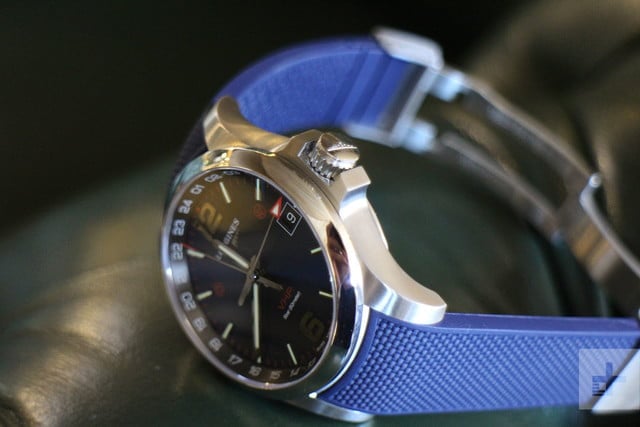
Andy Boxall/Digital Trends
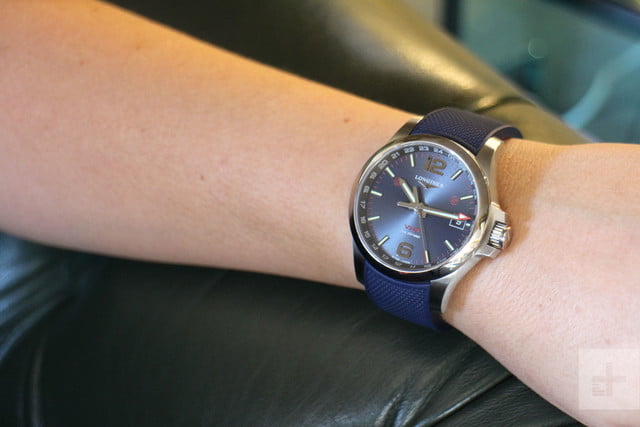
Andy Boxall/Digital Trends
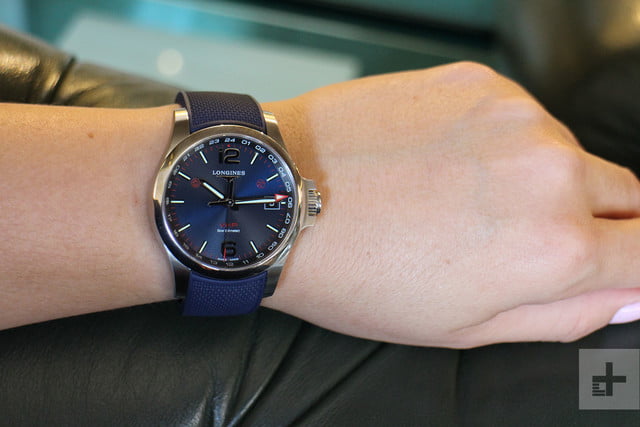
Andy Boxall/Digital Trends
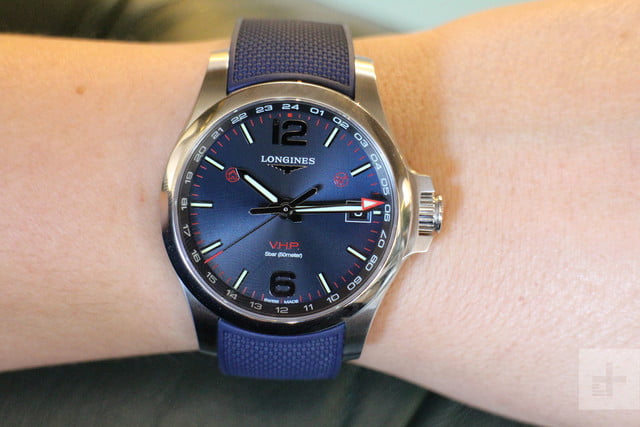
Andy Boxall/Digital Trends
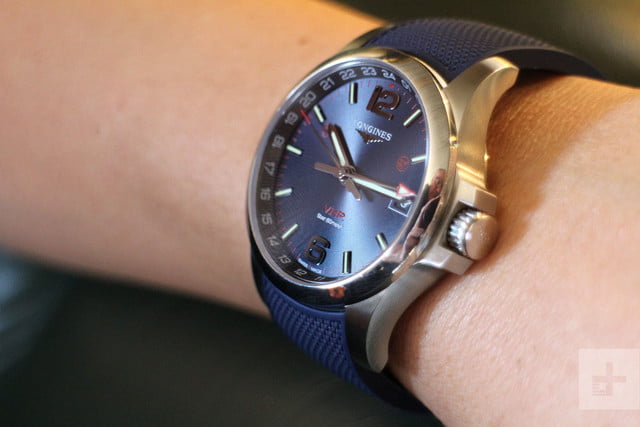
Andy Boxall/Digital Trends
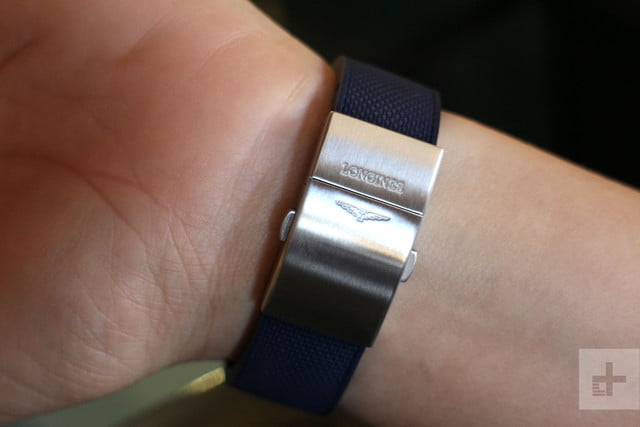
Andy Boxall/Digital Trends
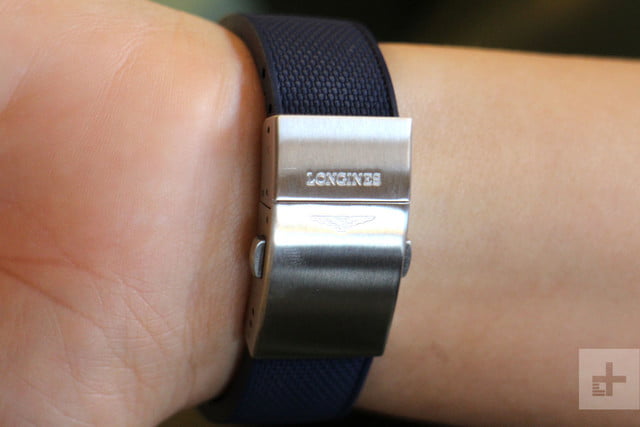
Andy Boxall/Digital Trends
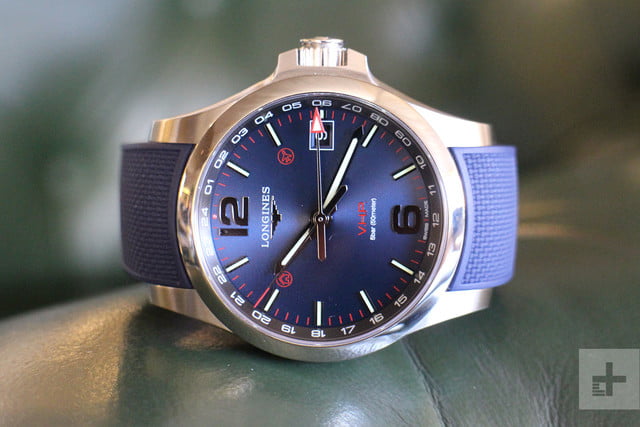
Andy Boxall/Digital Trends
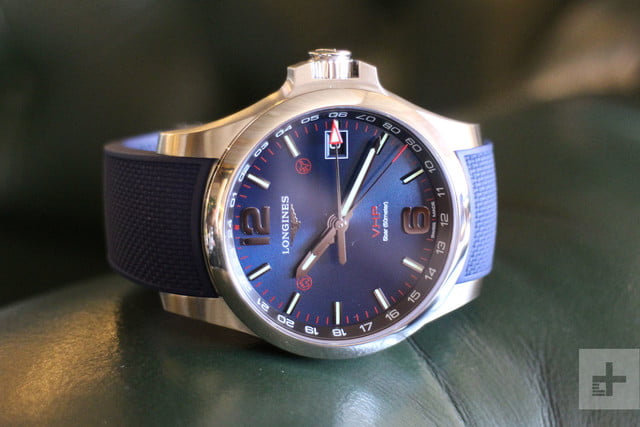
Andy Boxall/Digital Trends
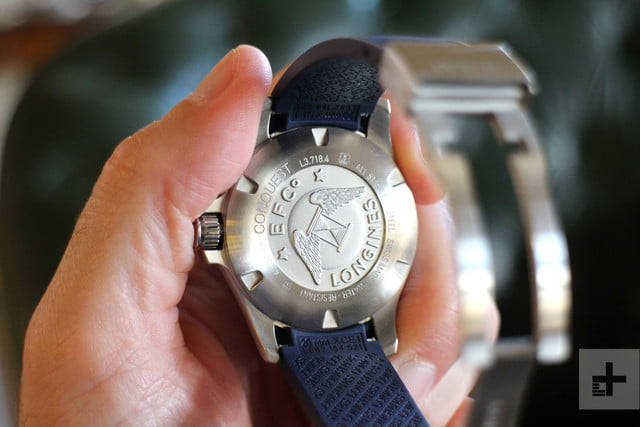
Andy Boxall/Digital Trends

Andy Boxall/Digital Trends
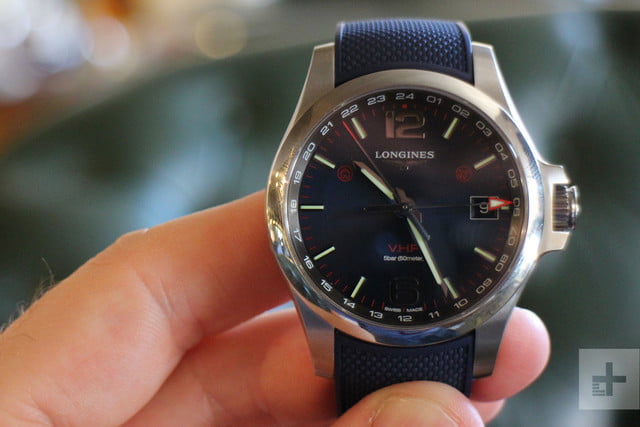
Andy Boxall/Digital Trends
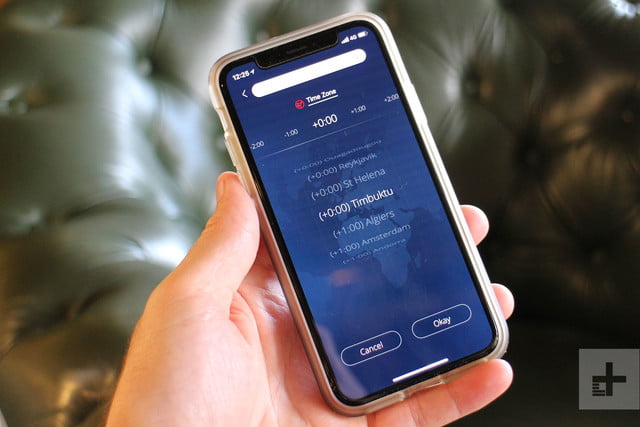
Andy Boxall/Digital Trends
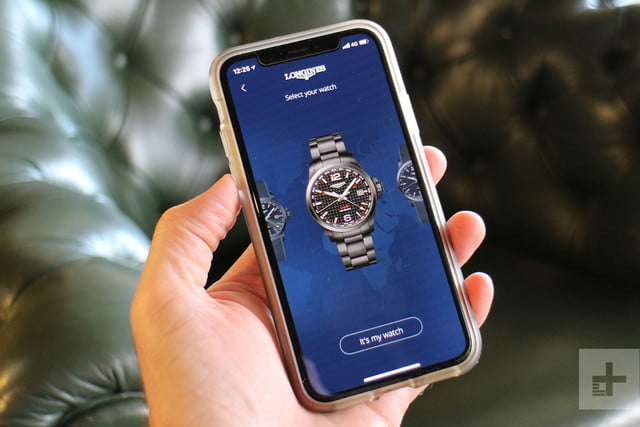
Andy Boxall/Digital Trends
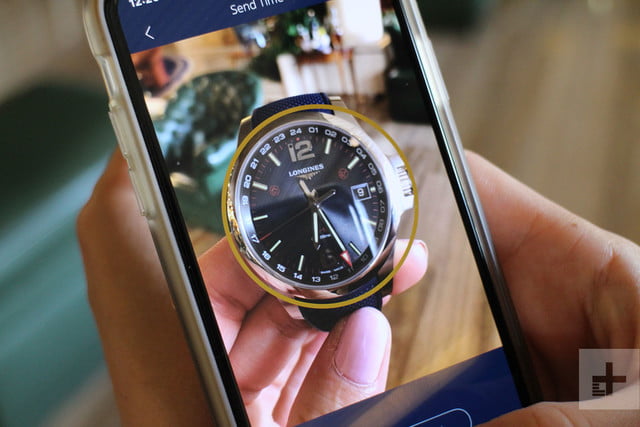
Andy Boxall/Digital Trends
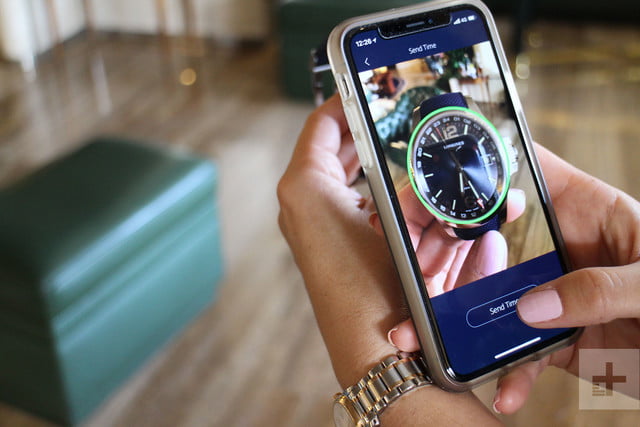
Andy Boxall/Digital Trends
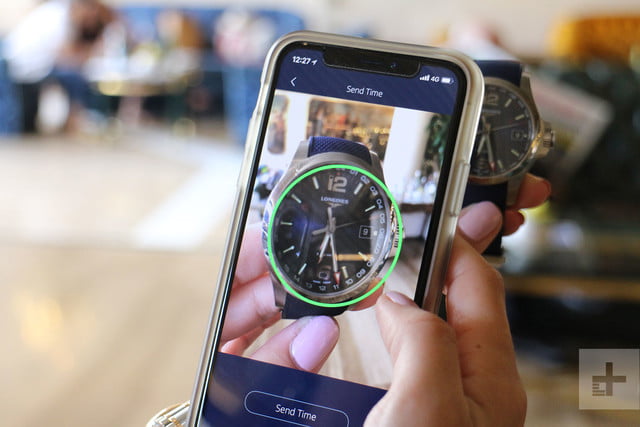
Andy Boxall/Digital Trends
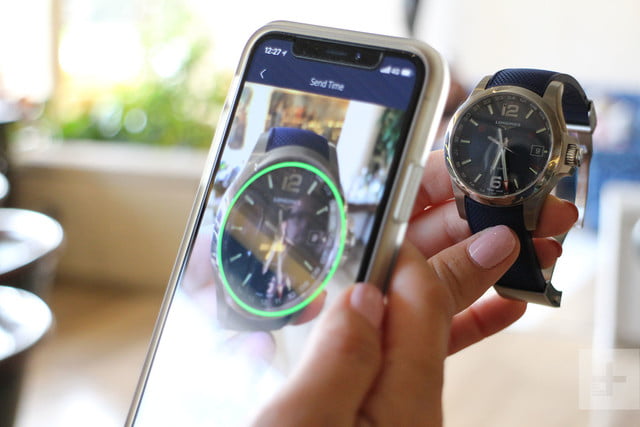
Andy Boxall/Digital Trends
Most smartwatches rely on Bluetooth, but it’s not the only way our phones can communicate with a wearable. Watchmaker Longines has proven this with the Conquest V.H.P. GMT Flash Setting — which uses the flash on your smartphone’s camera to transmit the data it needs. That’s right, just the flash. No Bluetooth, no Wi-Fi, and no messing around.
The Conquest V.H.P. GMT Flash Setting — a mouthful for sure — is not a smartwatch, and does not provide notifications, fitness tracking, or any other features we associate with connected watches. Instead it makes changing the world time zone not only simple, but manageable on a regular basis, and crucially for Longines, without disturbing the incredible accuracy of the watch.
Adjusting the time zone on a watch when traveling is usually done using the crown, but this often makes the watch potentially gain or lose seconds or minutes every time. This is unacceptable for Longines, especially since the V.H.P. name stands for Very High Precision. It’s well earned, as the watch will only gain or lose less than five seconds a year if left on its own. When you’re all fingers-and-thumbs changing the time using the crown, this astonishing accuracy will soon disappear.
Flash Setting
This is where Flash Setting comes in. Through a dedicated Longines app, you select your home time zone and a second time zone, and then prime the watch to receive a signal. The crown on the watch has a button incorporated — which actually feels very smartwatch-like — press and hold it down to activate the “pairing” mode. Tap the send time button in the app, and a camera viewfinder window appears where you line the watch up ready to receive the signal. It’s like pairing Snapchat’s Spectacles, or reading a QR code.
When correctly aligned, the flash unit blasts light into a tiny sensor hidden in the 1 of the number 12 at the top of the watch face. It takes only seconds. After confirming the change on the watch, the time changes accordingly. No fine tuning with the crown, and no loss of precious seconds. The crown’s button on the watch is used to change the time displayed, and the second hand can be told to point to the home or travel icon to clarify the time and your location match up — handy if there is only an hour’s difference, for example.
We tried it out with a selection of iPhone models, and were impressed with the speed and simplicity, but found it a little temperamental. It worked perfectly with several iPhone 7 and iPhone 8 models for example, but not with the iPhone X, a situation reported by other iPhone X owners at the launch event too. Speaking with ETA, the company that makes the movement inside the Conquest, mobile flashes sometimes have different frequencies, and they selected a “base” frequency at the low end of the spectrum to cover most phones. We understand testing all phones available would be practically impossible, but we were surprised a popular iPhone model didn’t operate correctly.
Not a smartwatch
The Conquest V.H.P. GMT Flash Setting is definitely not Longines’ response to the smartwatch. Longines CEO Walter von Känel has previously said the company will not make a smartwatch, and in an interview with Digital Trends and several other journalists he built on that comment, indicating it’s not because they’re bad products — although he was clearly no fan — but because of the manufacturing speed.
 Andy Boxall/Digital Trends
Andy Boxall/Digital Trends
“We cannot do it, that’s it,” he said. “It’s a different market.”
Technology here helps Longines achieve its goals of not only making an incredibly precise watch, but also maintaining the appeal and emotional attachment that comes with owning a traditional Swiss watch. Von Känel shared his feelings on not making the Flash Setting the only way to adjust the time zone very clear, saying:
”When they came to me and said we will only have Flash Setting, I said forget it,” he said. “My generation has to do it by hand.”
He referred to the watch as having “a double approach,” as it provides the convenience of a basic smartphones connection, and “for the stubborn person who doesn’t want to be a slave to the iPhone, I can adjust it myself.”
Given how we already found the Flash Setting didn’t like our iPhone X, this is a shrewd decision. Flash Setting is also a feature von Känel himself will rarely use, as he doesn’t own a smartphone, preferring to use a very basic feature phone without a flash at all. This encapsulates Longines fascinating approach to the new Conquest watch — an understanding of how to properly leverage new technology in a non-intrusive way, without losing what makes a desirable Swiss watch, a desirable Swiss watch.
Exclusive movement
Compatibility issues aside, Flash Setting is very easy to use, unlike the majority of smartwatches. Even the underlying technology in making the tech work is relatively simple. A photo-detector sensor inside the watch face reads the flashes from the phone; but it’s not some proprietary light-based system — it’s basic binary, like Morse code. It’s also the only major change to the V.H.P. GMT movement that took movement maker ETA four years to develop, and debuted in 2017 in the first Conquest V.H.P. watch.
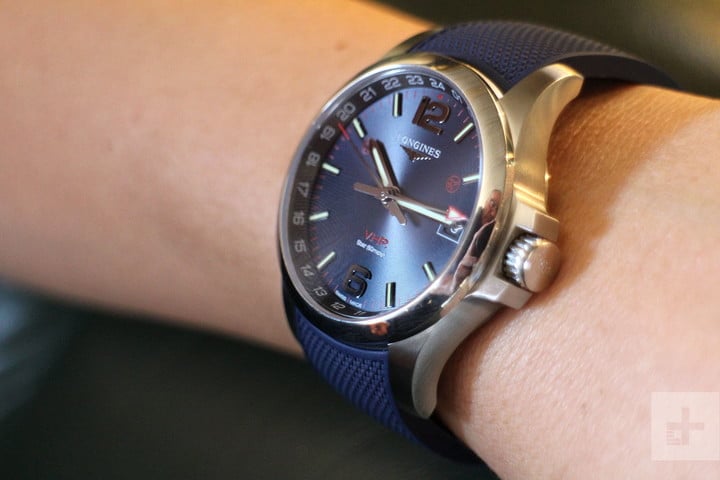 Andy Boxall/Digital Trends
Andy Boxall/Digital Trends
We took an in-depth look at the quartz movement earlier this year, but the highlights include an ability to autocorrect the time in the event of magnetism or shock forcing a tiny change, a built-in understanding of dates and times until the year 2399, and even an ability to hold and reset the time automatically when the battery needs to be changed after about four years. Precision, as you can tell, is everything.
Custom designed for Longines by ETA, it’s the beating heart inside the Conquest watch, and one of the primary reasons you’ll want one. ETA described it as a platform, suggesting further development, and it expects to build the photo-detector sensor into the movement itself in the future, reducing size and increasing versatility in design.
Good price, but a long time to wait
The Conquest V.H.P. GMT Flash Setting watch is good-looking and versatile, and we loved the way it looked and felt on our wrist — superbly weighted and balanced, with a striking design to catch the eye. It’s available with either a 41mm or 43mm case, making it suitable for most wrists, and in stainless steel or black PVD complemented by a black, carbon, white, or blue face.
You then have a choice of steel bracelets or rubber straps to match. We especially liked the stainless steel and blue combination seen in our pictures. It’s also reasonably priced for a Swiss watch with such a high level of technology, starting at $1,350 for the stainless steel model and $1,750 for the black PVD version.
CEO von Känel wasn’t exaggerating when he said Longines couldn’t compete with the manufacturing speed in the tech world. The Conquest V.H.P GMT Flash Setting watch will go on sale in 2019, giving Longines plenty of time to refine the device compatibility of Flash Setting, but a long time for those interested in buying one to wait.
Editors’ Recommendations
- How to install Flash on an Android phone or tablet
- Leica’s chic new product can’t take pictures, but you’ll still want it
- Look Ma, no hands! The Horizon watch discards tradition for daring simplicity
- Less glitz, more tech for Michael Kors and its new Access Runway smartwatch
- How to find a lost phone
What’s different about the Bose QC35 Series I and Series II?

Best answer: The main difference between the Bose QC35 Series I and Series II is that the latter supports Google Assistant and Alexa. It’s the model we recommend getting.
Amazon: Bose QC35 Series II ($349)
The Bose QC35 Series II has built-in Google Assistant and Alexa
The big feature of the Series II that you won’t find on Series I is built-in voice commands with the Google Assistant and Amazon Alexa.
Using the side button on the QC35s, you can quickly talk to either assistant to ask about the weather, respond to texts, control smart home gadgets, and virtually anything else you’d use them for on a Google Home or Echo.
Everything else is exactly the same
Aside from the inclusion of Google Assistant and Alexa, everything else about the Series II is the same as the Series I — including the design, fit, sound quality, battery life, noise-cancelation, etc. Everything.
Bose doesn’t officially sell Series I anymore
If you take a gander at Bose’s website, you’ll notice that it doesn’t sell the Series I variant of the QC35 anymore. In fact, most places don’t.
Some sites like Best Buy still allow you to buy the QC35 Series I, but at the same price as the Series II, there’s literally no point in buying the older model.
Just buy the Series II already 😛
Unless you can find a really, really good deal on the Bose QC35 Series I somewhere, we recommend getting the newer Series II. It keeps everything we loved about Series I and adds super useful integration with Google Assistant and Alexa. What’s not to like?
Our pick
Bose QC35 Series II

$349 at Amazon
The best version of the QC35 you can get.
If you’re interested in picking up the Bose QC35, do yourself a favor and get the Series II. Not only is built-in Google Assistant and Alexa super convenient, but Series II is also the only version that Bose officially sells these days.
Treat your lawn to Rachio’s second-gen smart controller for only $120 today
Keep that grass nice and green!

Today only, you can pick up the popular 2nd-gen Rachio Smart Sprinkler Controller for as little as $119.99 at Woot, which is $60 less than it sells for at other retailers, including Rachio itself. There are two versions of the system, one of which is designed to handle up to eight zones, and one made for up to 16 zones, so be sure to get the one that is best suited for your situation. You may be wondering why you’d spend over $100 to replace your existing controller that “works just fine”, but the answer is pretty simple.
The biggest benefit to the Rachio system is the smarts of it, not the fact that it can turn your sprinklers on and off. It uses local weather forecasts to help you avoid watering your yard while it’s raining, and you can set rain thresholds so it will skip watering if there has been enough, or is enough rain predicted for the near future. You can also start a quick run right from your phone, or even an Alexa-enabled device like the Echo Dot if you want some extra watering on a certain part of your yard.
Each month the system intelligently updates its scheduling (depending on which mode you use) and as the seasons change it adapts as well. I’ve been using a Rachio system for just over a year now, and I can’t live without it. The days of watering my yard while it’s raining, or having expensive bills because I didn’t know how to properly water my yard are now a thing of the past. At this price, your yard deserves one of these!
See at Woot
What’s your take on the Pixel 3 XL conspiracy theories?
All of these rumors will finally be laid to rest in less than a month.
Ever since the Pixel 3 XL leaks started to surface earlier this year, there’s been an unavoidable narrative surrounding them that’s caused a lot of folks to get stirred up. While the leaks we’ve been seeing are more than likely the real deal and the phone Google’s going to announce on October 9, some people believe that these have been faked by Google and that we’ll actually see a phone other than the 3 XL announced at the fall hardware event.

There are a lot of people taking a stance on both sides of this argument. Many expect the Pixel 3 XL to be the flagship we’re getting for 2018, but at the same time, others are convinced this is meant to dupe us and that we’ll actually get some sort of Ultra Pixel instead.
Here’s what members of the AC forums have to say.
Mike Dee
09-10-2018 02:55 PM“
Not buying it and not a smart decision at all if it were true.
Reply
Morty2264
09-10-2018 05:01 PM“
Hmm, I guess you never know! I do agree with you that it would be quite difficult to keep a phone (especially a flagship from Google) under wraps for so long – especially so close to its release – so there is that. But hey, if anyone could pull off that kind of secret-phone-business thing, it’s Google!
Reply
vzwuser76
09-11-2018 08:29 PM“
While the theory does seem implausible, the things I can’t reconcile are Google wanting negative reviews from YouTubers, and the “stolen” shipment of Pixel 3XLs.
On the first part, what possible reason would you have to want negative reviews for a promo regarding a product you’re debuting. That makes zero sense to me. Unless it’s internal and they’re going to make the design team watch it on a…Reply
dov1978
09-12-2018 01:02 AM“
I honestly think Google reckon they’re just like Apple and that they can produce a device that everyone hates the look of at first but will grow to love and think the opposite shortly after. They have that same arrogance but they’ll never pull it off like Apple do..
I’m secretly hoping they’ve bluffed everyone and have a notch less phone waiting in the wings but let’s be honest…. It’s Google
Reply
Now, we’d love to hear from you. What’s your take on the Pixel 3 XL conspiracy theories?
Join the conversation in the forums!
Samsung Galaxy Note 9: Which storage size should I buy?

The answer is simple for most people.
Samsung pulled out the stops for the power-users with the launch of the Galaxy Note 9. Three of the biggest things spec hounds were looking for all received significant improvements over the last generation: battery, storage, and memory. At the same time, the price went up — and in the case of the 512GB model, it went way up. Most people who were originally excited about the idea of a 512GB storage Galaxy Note 9 quickly tempered their lust after seeing the $1249 price tag.
But even still, people will be looking at the upgraded model. As you consider your Note 9 purchase and try to decide which storage is right for you, we have a few things for you to keep in mind.
Who should get 128GB
128GB is the baseline Note 9 storage and will automatically grab a majority of sales because of it. Most people who had a 32 or 64GB phone previously will be extremely happy with the jump up to 128GB of storage by default. The price jump from the Note 8 up to $999 seems a little steep, but keep in mind that Samsung charges a $50 premium to go from 64 to 128GB on the Galaxy S9+ — so this isn’t that big of a deal if you were someone who was going to buy more storage anyway.
If you fit into a 64GB phone today, don’t hesitate about getting a 128GB Note 9.
With 128GB internally, you’re going to have well over 100GB of free space after your first start-up and installation of your typical apps. (After getting my own Note 9 set up, with plenty of data downloaded, I have 97GB free.) That’s a lot of space for Netflix downloads, big games, 4K video shooting and more. Even if you’re pushing the limits of your 64GB phone today, there’s a good chance you’re going to be able to make it work with an additional 64GB — and remember you always have a microSD card slot for any future overflow.
So if you’re in any way worried about the additional cost required to go up to 512GB, and fit into a 64GB phone currently, you should have no hesitations about getting the base model 128GB Note 9.
See at Samsung
Who should get 512GB
We can’t talk about the benefits of the extra storage before first addressing the price increase. In order to get 512GB of storage, you’ll pay $250 (or, 25%) more for your Note 9. That’s a significant move on an already extremely expensive phone. It’s true that carrier and retailer financing programs can ease the burden of that extra price, but even on a 24-month payment plan we’re talking about moving from $41 to $52 per month — it’s still a big jump.
If you can eat the cost, the 512GB Note 9 is the ultimate expression of what the Galaxy Note line is all about.
But if you can eat the cost, the higher-end Note 9 with 512GB of storage and 8GB of RAM is the ultimate expression of what the Galaxy Note line is all about: doing everything to the biggest extent possible. You’re encouraged to never say the word “never,” but it’s hard to see how you’d fill up 512GB of storage given today’s file sizes for apps, music, games and video. Even if you throw out all thoughts of managing your storage in any way, and simply keep every single thing you download, you’d be hard-pressed to push the 512GB limit. (And I’d recommend that if you are storing that much on your phone that you should have a robust backup system for keeping a copy of that data safe elsewhere.)
With 512GB internally, you can add another 512GB with a microSD card (albeit for about $350) to go full-on crazy mode and have 1TB of storage available. Even if you keep things reasonable with a 256GB card (for about one-quarter the price), that’s over 750GB of storage in your hand everywhere you go.
With that kind of potential, and the knowledge that you’ll effectively never worry about how much storage you have left when downloading or creating content, if you can eat the extra cost it’s worth considering the big jump up to 512GB.
See at Samsung
More RAM is just a nice bonus
Like some other phones, Samsung offers extra RAM in the model with increased storage — in this case, a jump up to 8GB from 6GB. Just like we’ve discussed regarding the OnePlus 6’s extra RAM, we caution you against putting too much stock in what the extra memory can actually do for you.
Getting more RAM is a nice bonus — not a reason to spend $250 extra.
Yes, the extra memory gives you more room when running dozens of apps at the same time, or when running several intensive apps in the DeX desktop interface while running others on the phone itself. But the use cases where you’ll actually see a clear benefit between 6 and 8GB are minimal. With the base Galaxy Note 9 (and Galaxy S9+ as well) coming with 6GB of RAM, Samsung is designing all of its software for devices that have that memory size — it isn’t going to build things to expect 8GB of RAM, because a large majority of people won’t actually have that much.
Your choice to buy a higher-model Note 9 should start and end with a decision on whether you value having 512GB of storage at $250. The extra RAM is a nice bit of futureproofing — and bragging rights — but nothing more, and shouldn’t be a deciding factor for whether you make the jump to the higher model.
Which color Galaxy Note 9 should I buy: Blue, purple, gold, or black?
Samsung Galaxy Note 9
- Samsung Galaxy Note 9 review
- Galaxy Note 9 vs. Note 8
- Where to buy the Galaxy Note 9
- Galaxy Note 9 specifications
- Is the Note 8 still a good buy?
- Join our Galaxy Note 9 forums
AT&T
Verizon
T-Mobile
Samsung
Amazon
LittleBits announces three new Inventor Kits that are all available now
The new kits start at just $99.99.

LittleBits first debuted in 2011 with the intent of helping kids learn how to code, create, and express themselves through technology. Today, the company announced threw new Inventor Kits it’s adding to its lineup to give kiddos even more ways to explore the worlds of STEM and STEAM.
The first new bundle is the Base Inventor Kit. For just $99.99, you’ll get more than 12 different activities and the companion Inventor App that guides users through the things they can create — such as a robotic gripper arm that’s controlled via voice control.
For that same $99.99 price, you can also pick up the Electronic Music Inventor Kit. This kit allows your kids (or you) to build a “rockin’ synth guitar” or other instruments, like hands-free air drums and more. Lastly, the Space Rover Inventor Kit comes with 30+ activities and allows you to build a variety of space-themed vehicles. This kit costs $199.99.
All three of the new kits are available for purchase now!
See at LittleBits




